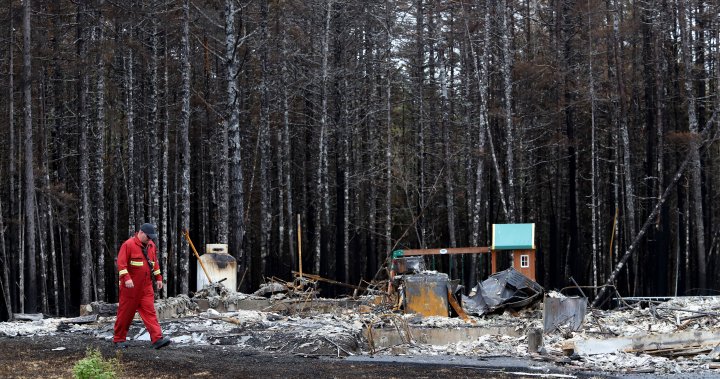One year after a devastating wildfire swept through a Halifax-area neighbourhood in May 2023, the aftermath of the destruction is still visible. The fire burned 969 hectares, destroyed 151 homes, and forced more than 16,000 residents to evacuate the area, leaving behind blackened trees and damaged grass. Jenny Saulnier, a resident of the affected community, described the experience as a living nightmare, packing only the essentials before fleeing for her life. The wildfire was part of a series of devastating fires that occurred in Nova Scotia during the same period, including the Barrington Lake fire, the largest wildfire in the province’s history, which forced over 6,000 people from their homes and destroyed numerous buildings.
As the province and affected communities continue to recover from the wildfires, lessons have been learned to improve emergency response strategies in the future. John Lohr, the minister responsible for the province’s emergency management office, acknowledged the need to better organize resources and personnel during emergencies and highlighted the formation of a volunteer-led response group and a new department of emergency management to enhance the province’s readiness. More municipal officials have been granted access to the province’s emergency alert system to improve communication and coordination during emergencies. The government is focused on ongoing consultations with municipal partners and police to ensure a swift and effective response in case of future emergencies.
In the aftermath of the destruction in Upper Tantallon and Hammonds Plains, efforts are being made to improve emergency preparedness in the affected communities. Calls have increased for the establishment of an emergency egress route for the Westwood Hills neighbourhood where the wildfire began, with potential locations identified in a staff report presented to the Halifax Regional Council. In November, Halifax launched a Voluntary Vulnerable Persons registry for residents who may require extra support during emergencies. The use of emergency alerts has also been a topic of discussion, with plans to ensure the activation of the public communication system hfxALERT in future emergencies. Additionally, a new coordinator has been hired to operate Halifax’s emergency alert system and assist with the vulnerable persons registry.
In December, Nova Scotia RCMP concluded their investigation into the wildfires in the Halifax area, determining that the fire started from unextinguished embers from a small outdoor patio fireplace, with no evidence of criminality involved. Premier Tim Houston announced in March the formation of the Nova Scotia Guard, a volunteer corps for residents interested in assisting during natural disasters. The province aims to build a pool of volunteers with usable skills to support first responders and community organizations during and after emergencies. The wildfires cost the Halifax Regional Municipality approximately $11.7 million, with 150 building permits approved for damaged or lost properties. A post-incident analysis report is currently being conducted by Halifax Regional Fire and Emergency to assess their response to the wildfires, with plans to share the findings with the public upon completion.


